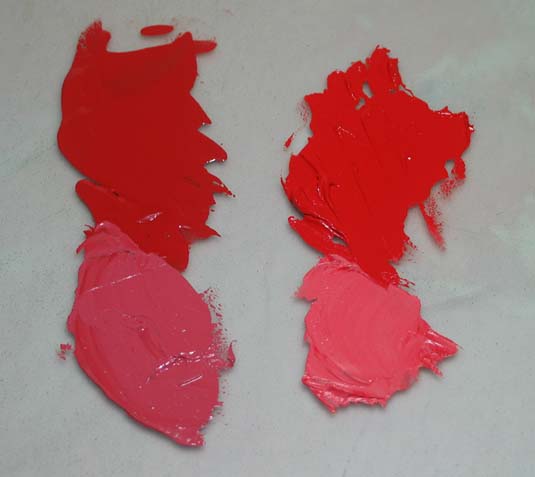 The color tests here are a perfect way to portray the differences between the modern pigments and the historic. On the left is the historic vermilion, pure above and mixed with white below.
The color tests here are a perfect way to portray the differences between the modern pigments and the historic. On the left is the historic vermilion, pure above and mixed with white below.
On the right is the modern pigment, cadmium red, pure on the top and mixed with white below. The intensity of the two colors is immediately apparent. The cadmium (right) is much more intense. This pigment will instantly overpower any color mixed with it. Only a tiny amount is necessary to alter white or any other color, especially those of a lighter hue. Of course, it is very popular and used widely by artists today and is a staple in any paintbox. Mixed with white it has a bright pink hue.
The vermilion on the left is far more subtle with a much more grayed tone than the cadmium. There is never a worry that vermilion will over power many other colors. When mixed with white it has a rather dusky look. This is the only true red I have used in my Lessons from the Low Countries Series, and it is indispensable.

Margret, you’re in the home stretch now; time for the paint to dry. Maybe the post from the esteemed Dr. Kremer will inspire you on. And you’re lesson in vermilion was excellent….best of energy to you.